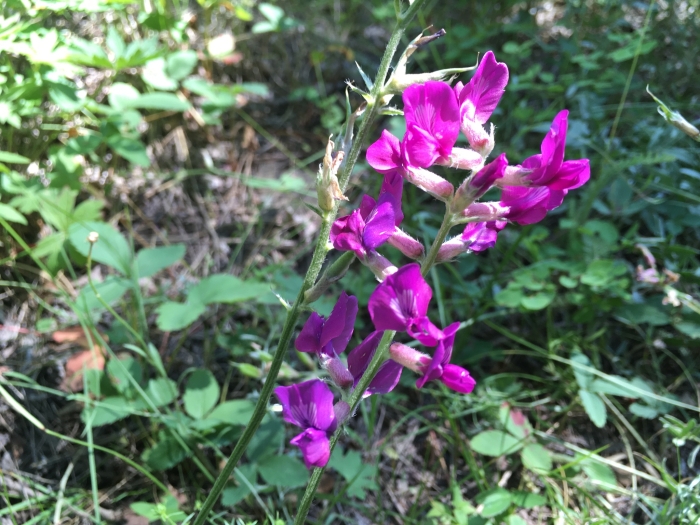Purple Locoweed
(Oxytropis lambertii)
Purple Locoweed (Oxytropis lambertii)
/
/

Shalana Gray
CC BY 4.0
Image By:
Shalana Gray
Recorded By:
Copyright:
CC BY 4.0
Copyright Notice:
Photo by: Shalana Gray | License Type: CC BY 4.0 | License URL: http://creativecommons.org/licenses/by/4.0/ | Rights Holder: Shalana Gray | Publisher: iNaturalist | Date Created: 2021-07-27T16:40:41Z |
























Estimated Native Range
Summary
Oxytropis lambertii, commonly known as Purple Locoweed or Lambert’s Crazy Weed, is a perennial herb that is native to the prairie grasslands and open areas of the Great Plains in North America, ranging from central Canada through the mid-western United States to Texas, and extending west to Arizona and Montana. It typically forms clumps up to 2 feet (0.6 meters) in height and width, with a rosette of basal leaves and showy erect inflorescences of purple or pinkish flowers that bloom from late spring to early summer. The plant is well-adapted to dry, well-drained soils and thrives in full sun conditions.
Purple Locoweed is recognized for its striking flowers, which can add color to native plant gardens and restoration projects. However, its cultivation is limited due to the presence of the toxin swainsonine, produced by endophytic fungi, which poses a risk of livestock poisoning. Gardeners should be cautious when considering this plant for ornamental use, especially in areas where grazing animals are present. It requires minimal maintenance once established, tolerating drought and poor soil conditions. There are no popular garden cultivars due to its toxic nature.CC BY-SA 4.0
Purple Locoweed is recognized for its striking flowers, which can add color to native plant gardens and restoration projects. However, its cultivation is limited due to the presence of the toxin swainsonine, produced by endophytic fungi, which poses a risk of livestock poisoning. Gardeners should be cautious when considering this plant for ornamental use, especially in areas where grazing animals are present. It requires minimal maintenance once established, tolerating drought and poor soil conditions. There are no popular garden cultivars due to its toxic nature.CC BY-SA 4.0
Plant Description
- Plant Type: Herb
- Height: 0.5-1.5 feet
- Width: 0.5-1.5 feet
- Growth Rate: Moderate
- Flower Color: Red
- Flowering Season: Spring, Summer, Fall
- Leaf Retention: Deciduous
Growth Requirements
- Sun: Full Sun, Part Shade
- Water: Low
- Drainage: Fast, Medium
Common Uses
Butterfly Garden, Drought Tolerant, Low Maintenance
Natural Habitat
Prairie grasslands and open areas of the Great Plains
Other Names
Common Names: Purple Locoweed, Lambert’s Locoweed, Locoweed, Purple Loco, Stemless Loco, Lambert Crazyweed, Lambert’s Rattlepod, White Woollyloco
Scientific Names: , Oxytropis lambertii, Aragallus lambertii, Astragalus lambertii var. bigelowii, Oxytropis hookeriana, Oxytropis plattensis, Spiesia lambertii,
GBIF Accepted Name: